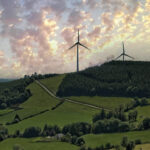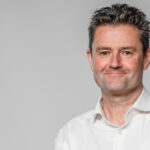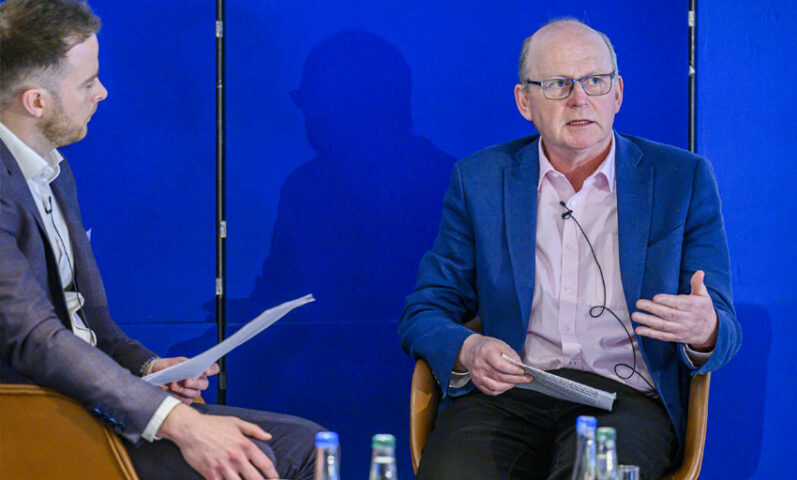
Budget 2024 is our last chance to accelerate Ireland’s energy revolution
9th October 2023
A route to market
9th October 2023Kevin O’Sullivan: Supergrid super solution

Launching Supergrid Super Solution: The Key to Solving the Energy Crisis in February 2023, Tánaiste Micheál Martin TD asserted: “I [have] articulated the idea of the supergrid as the only ultimate way to go over the next number of decades.” Ciarán Galway speaks with the book’s coauthor and current environment and science editor of The Irish Times, Kevin O’Sullivan about the concept.
Ciarán Galway (CG): Could you begin by explaining how your book – Supergrid: Super Solution – came about?
Kevin O’Sullivan (KO’S): Eddie O’Connor [SuperNode Chair] rang me this time last year [May 2022] and said, ‘I am thinking about writing a book’. It was very interesting in the sense that he wanted to outline the need for the supergrid in the global context, in the climate context, and in particular, the context of continuing kowtowing to the fossil fuel sector. Within a very intense three-month period, we produced the book. It is not going to be a best seller, but its purpose is to sell the big idea. Eddie believes – and this is what really attracted me – that this is a big idea that will transform not just Ireland but transform Europe and with every chance that others will follow if Europe succeeds in generating the supergrid.
I am very conscious of the slowness of getting things done, so we produced a blueprint in this book about how it can be done properly, with a high degree of cooperation, and with a very quick payback period. I was very interested in how much we spend on fossil fuel subsidies. Diverting all that funding could really accelerate development of the supergrid. It is in all our collective best interest. It is not for one particular company or one particular transmission operator to benefit, but we still do not have the breakthrough yet.
Now just to underline, most people say, ‘oh, yeah, we need the supergrid, we need cooperation’. But this book is saying that we need a high degree of innovation, using materials that can transmit power without resistance over vast distances with no loss. That is the essential part. It is not saying we will have a grid and we will use traditional cabling in the form of copper wires, it is saying we must make that big leap.
CG: Am I right in saying that the central thesis is connecting Europe’s best renewable sources – northern Europe’s offshore windfarms and southern Europe’s solar PV?
KO’S: Absolutely. There is perfect complementarity with those two sources. In other words, in winter, we are likely to have high wind in the North Atlantic, which is the primary power source when solar might not be so predominant. Then in summertime, when we are likely to have low wind, we will have vast amounts of Mediterranean solar PV resources, not just within Europe, but across north Africa. There is a graph in the book from the International Energy Agency. When Eddie saw that graphic, he was gobsmacked because it shows how each source resonates perfectly with the other.
CG: So the idea is that a variable supply of renewable energy becomes a firm supply. Does that then negate the need for storage altogether?
KO’S: No, the particular element Eddie wrote in the book on the technology side explains that we will need some storage and battery technology. But having the supergrid not only enables total decarbonisation of Europe, but it also means less reliance on batteries and other technologies. And Eddie believes that it can be cost competitive.
CG: The line is to “electrify everything”, but does that really mean everything? Given the chapter provocatively titled ‘Hydrogen: A Major Distraction’, is there a role for hydrogen?
KO’S: The line is really electrify almost everything. But you are right. Summarising Eddie’s view on hydrogen – and I have a slightly different perspective on it – he believes that people, energy companies, and countries are falling for a sort of deception on cost. Contrary to what some of the coverage is, he fully recognises the importance of hydrogen and in particular, green hydrogen, for difficult-to-decarbonise heavy industry sectors. But he just feels that Europe is not going to become the powerhouse of green hydrogen – even though there is evidence that it is gearing up for that – because of price. Eddie is saying that we will get our hydrogen from solar in particular and from obvious places that can compete on price, whether it is Africa, the Middle East, or South America. Therefore, he believes that there is a dominant view within Europe that is fundamentally wrong. He is actually saying that when we generate all our offshore power, that it will be power that we transmit to Europe, not hydrogen, and that the cost case will be very clear on that.
CG: In October 2022, in A Power System for a Carbon Neutral Europe, ENTSO-E wrote that, “the [supergrid] concept could materialise for bulk exchanges with neighbouring countries if geopolitical conditions will allow it”. To what extent then has the Russian invasion of Ukraine brought us all into sharper relief?
KO’S: The Russian invasion has concentrated minds greatly. And I think even within the national mindset of Ireland, that has been the case because our energy security has been exposed to a very grave extent. That has broken down a lot of the barriers and there is a greater sense of urgency. As you know, Ireland is supporting the Ostend Declaration in terms of building a meshed offshore grid. Now, it has not made the jump in terms of saying what technology will be deployed and I think it should, in that it must use the best available technology. I think superconductors are proven; they are not just a theoretical concept. Now, they must be scaled up and that that is accepted. We need to scale up to the point where we can transmit vast amounts of power over hundreds and hundreds of kilometres using a meshed grid. The argument in favour of a meshed grid is widely accepted now, which is good. How exactly that is constructed and connected to individual countries and put offshore is the challenge.
“It is fair to say the fossil fuel sector has reasserted itself during the energy crisis. And from my own perspective, it has engaged in an appalling rolling back of its renewable targets…”
Kevin O’Sullivan, coauthor of Supergrid Super Solution: The Key to Solving the Energy Crisis
CG: What are the barriers in an Irish context? I know Eddie O’Connor has previously mentioned or referenced bureaucratic inertia.
KO’S: Eddie has no time for any future investment in fossil fuels. He thinks we have been conned for far too long, the scale of the damage is appalling in terms of the planet, and the quicker we have a path away from fossil fuels, the better. It is fair to say the fossil fuel sector has reasserted itself during the energy crisis. And from my own perspective, it has engaged in an appalling rolling back of its renewable targets, and most of the big players are guilty of that. That is the climate battle being fought. Ireland must step up and say, with greater clarity, ‘we are going down this renewable route, we are going to stop exploration, and we are going to stop fossil fuel subsidies and redirect all that money, not to just towards development of renewable technology, but obviously towards a just transition’. There are very obvious steps for Ireland to pursue.
CG: With regard to the technology, where is the research focused at the minute?
KO’S: The research is at a very interesting stage, because it is at scale up towards commercialisation and that is outlined in the book. We are talking about commercialisation within a decade. A lot of the work is done around insulation, because it is necessary to reduce the temperature by so much for this superconductivity effect. Obviously, the best installations are required. But also, it is very interesting the extent to which transmission materials like yttrium and gadolinium are so effective. In terms of quantity, much less of them are needed in comparison to say copper. Much of the work is around maximising the efficiency of all that. SuperNode is just one player, but it is certainly at the cutting edge. Recently, it announced a very interesting collaboration with CERN, and I think that is a really amazing coalition and that will help shorten the timeframe. SuperNode has a facility close to the M50 at the Red Cow roundabout where it is actually scaling up the length of these transmission devices and also optimising the best use of insulation.
CG: Where does the rubber hit the road and the supergrid become reality?
KO’S: The rubber hit the road yesterday. The level of investment is about €10 or €11 billion within those projects alone, and the amount of energy is very significant in sense of how many homes would power in the shorter term. It is a question of building on that. The book really highlights the offshore elements in the sense that it is the option to accelerate. Yes, we must have onshore and yes, we must have all the different solutions to decarbonise and to address our greenhouse gas emissions. But the scale of our exclusive economic zone is such that we have huge potential, and the technology is improving all the time. That is where we need to concentrate our efforts and that is where we get the quickest return.
